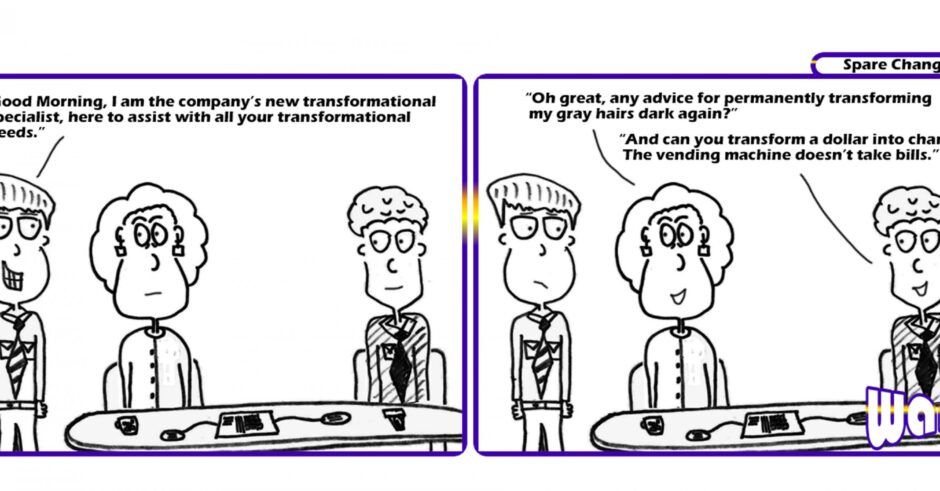“Transformation” is the buzzword of the day. Agile Transformation. Digital Transformation. HR Transformation. But what does “Transformation” really mean?

Source: Dictionary.com
“A thorough or dramatic change in form or appearance.” This is in stark contrast to incremental improvement. To be clear, I’m not against incremental improvement, and incremental improvement may be a tactic for transformation, but it’s not the goal.
An Organizational Transformation seeks to become an organization that looks nothing like the original. The Operating Model is different, meaning that the culture, structure, and processes have changed because the organization has changed at the core.
A Transformation is in order when the fundamental tenets of the organization have changed. The culture, structure, and processes must change in order to support the core change. A Transformation is NOT simply a word for an initiative or focus area. I have seen the word “Transformation” used for things like cost-cutting measures. If you’re trimming cost, it’s not fundamentally changing how you operate, it’s simply an initiative.
Core Transformation. The core change that sparks a transformation is a fundamental shift in the way the organization does business. For example, Agile has sparked core change by promoting the short-cycle feedback loop. Organizations that are built around completing one step before moving to the next will make large shifts in all areas of their company.
Culture Transformation. As a result of the Industrial Age, many companies have developed a culture that no longer serves them. I don’t believe in flipping cultures wholesale just to be like Google. Take a hard look at your culture, identify elements that are hurting your outcomes, and tackle those. The Culture changes should support the Core Transformation. In the example above, moving to short-cycles and feedback-loops won’t work in a culture that expects work to be perfect and complete before someone will look at it. The culture will require a change in how unfinished work is viewed.
Structure Transformation. The structure of both the organization and the work itself will change to support the Core Transformation. Most corporate workers who have been through countless reorgs know that the organizational structure is a continuous experiment. Getting people aligned to the work is always fluid. In the example of short-cycles, fast feedback, the structures need to change to get the people in the feedback loop closer together. It’s difficult to get fast feedback from 10 different people in 10 different organizations. This is why Agile teams tend to re-organize around cross-functional teams.
Process Transformation. Process transformation is the area most organizations are comfortable with because most have been doing process improvement work for years. Process Transformation introduces “clean sheet thinking” where rather than improve an existing process, they imagine new possibilities as if nothing existed. Design Thinking tools are useful for transforming process.
Transformation opens up a whole new world of possibilities. Have fun with it!


